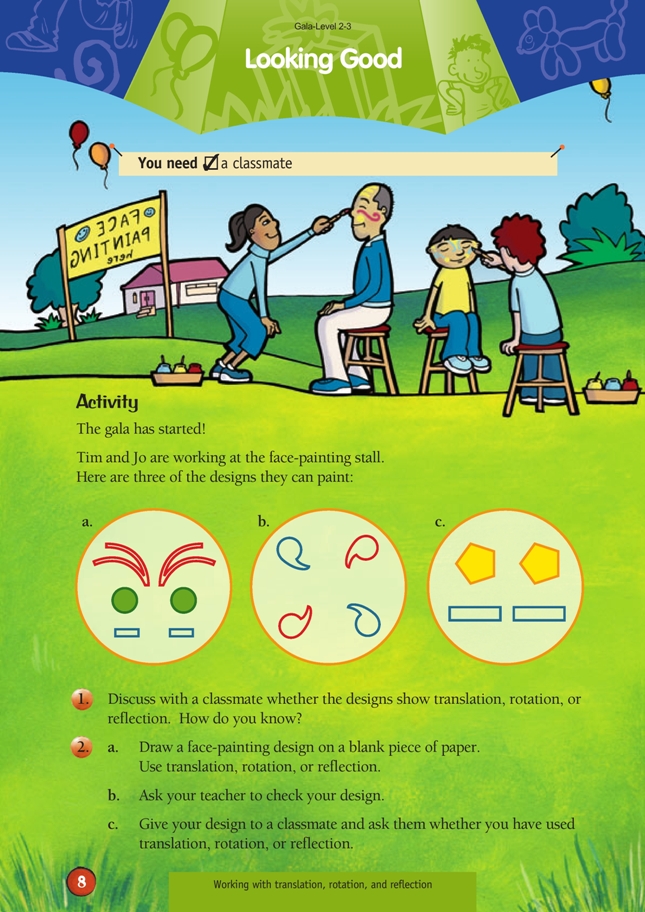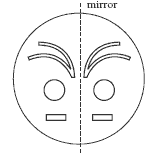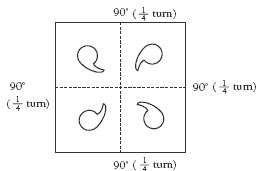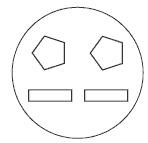This is a level 3 geometry activity from the Figure It Out series.
A PDF of the student activity is included.
Click on the image to enlarge it. Click again to close. Download PDF (290 KB)
identify transformations as translations, reflections or rotations
design patterns that show translations, reflections and rotations
A classmate
In this activity, the students practise distinguishing between the ways shapes can change by reflecting (flipping), rotating (turning), and translating (sliding or moving along in any direction).
To see whether design a shows reflection, the students could put a perspex mirror on the half-fold (mirror line) and confirm that this completes the design.
The orientation is reversed or flipped. The reflecting shape has the same relationship to the mirror line as the original shape has.
The students need to note that the shape in design b has turned about a point to complete a full circle. They should also explain how it has turned. They can check this by using tracing paper and a pin and then tracing over the shape in the top left corner. Using a pin to hold the tracing paper at the point of rotation, the students can turn the paper to describe the path and 1/4 turn rotation of the face design.
The shape is turned clockwise around a point. The orientation does not change.
The students need to recognise the shapes that have moved along without changing their shape or orientation, such as the shapes in design c.
The shapes have slid without changing their shape or orientation.
In question 2, the students can create designs by making card stencils for shapes they would like to use on the face. They can move the shape(s) in different ways to create their face-painting pattern. Use the words “translating”, “reflecting”, and “rotating” as you encourage the students to experiment with the pattern they have created. Once the students are satisfied, they can colour their designs, using plenty of colour to highlight interesting patterns.
The activity may be extended further by:
• the teacher selecting and copying some of the students’ designs for use on the overhead projector and the students explaining those designs to the class
• the students combining more than one transformation within a design. For example, the design could rotate, then translate, rotate, and then translate.
Answers to Activity
1. a. Reflection (flip) – because there is a mirror line down the centre of the face
b. Rotation (turn) – because the shapes map onto each other every 90˚ turn about the centre
c. Translation (slide) – because the shapes have moved horizontally but they are still
facing the same way
2. Practical activities. Teacher to check



